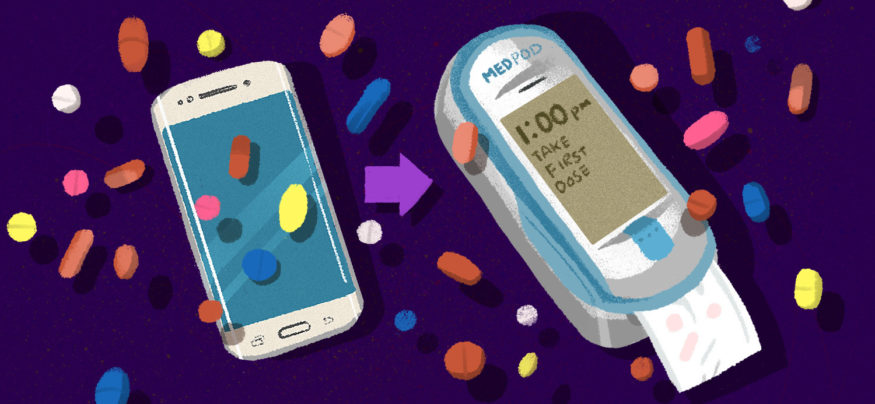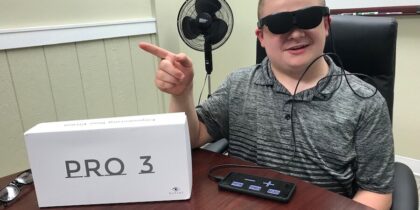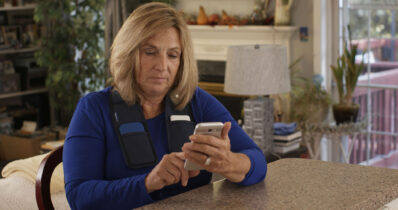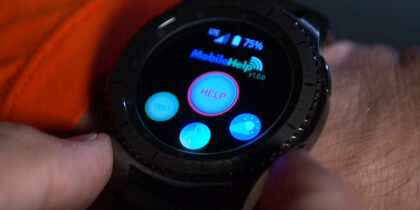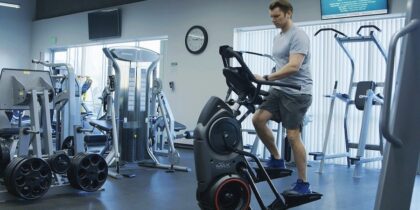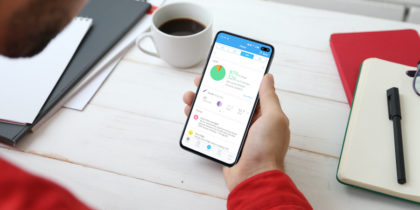Physicians put considerable time and thought into crafting drug regimens for their patients. But, when an individual doesn’t follow the plan as prescribed by their physician, adverse health complications can arise.
About half of U.S. adults suffer from one or more chronic health conditions, according to a 2014 report published in “The Lancet.” Many of these diseases — including heart disease, stroke and diabetes — are highly treatable with proper medication therapy management. Yet, of the 1.8 billion prescriptions dispensed each year in the U.S., according to a 2010 report by the Healthcare Intelligence Network, only 50 percent are taken correctly. This rampant nonadherence comes with a steep price tag. Along with higher risk of death, it also increases medical costs by $290 billion annually and is responsible for 33 to 69 percent of all medication-related hospital admissions in the U.S.
To overcome these challenges, healthcare providers and insurers need new tools to ensure that patients fill essential prescriptions and take them correctly.
DayaMed is ready to help. Its new product — MedPod® — is a medication dispenser and communication hub designed to simplify medication therapy management for patients, and to alert concerned parties when patients don’t comply with their treatment plans. The MedPod provides an integrated and wireless disease management mobile portal allowing patient audio/video communication with pharmacists, discharge coordinators and caregivers that can be initiated by the patients or their caregivers.
How the MedPod Works
Despite the great strides made in preventing and treating heart disease, diabetes and other chronic conditions, many patients continue to suffer complications because they fail to take medications as directed.
“In the U.S. and around the world, there’s a pandemic of heart attack, stroke and diabetes,” says Justin Daya, CEO of DayaMed. “There’s so much evidence out there about how to treat and manage these patients, but many are still not taking their medications. It’s a public and population health nightmare.”
DayaMed’s solution: Enable the pharmacy to package medications into individual bar-coded dose-specific pouches, provide a device that dispenses these pouches and tracks when and where they’re taken, and make it easy for care providers, insurers, pharmacies and caregivers to follow up with nonadherent patients. Additionally, DayaMed provides the platform for the patient’s preapproved medical ecosystem to intervene in real-time through the MedPod’s voice and video communication hub.
The MedPod is structured around a Samsung Galaxy S smartphone, which provides LTE connectivity via AT&T. “When patients receive the MedPod, they don’t know it’s powered by a Samsung device,” says Daya. “They just see a beautiful, edge-to-edge, curved screen within the MedPod.”
The MedPod also connects with Bluetooth-enabled medical devices, such as blood pressure cuffs, glucometers, scales, pulse oximeters and EKG devices. Biometric data from the devices are transmitted in a real-time, encrypted format into care providers’ electronic health records (EHRs), pharmacy information systems and insurance company databases with the data becoming part of provider’s regular work flow.
“Because we contract and integrate directly with providers, pharmacies, insurance companies, employers and pharmaceutical companies, the device arrives ready for the patient to use,” explains Daya. “We already know the patient’s prescription regimen, dosing schedule and any notes the physician entered into the EHR. The patient receives the MedPod, turns it on and experiences an introductory video with information about how to use the prescribed Bluetooth devices. Then at the prescribed dosage time, the patient receives the first alert to take their medication or biometric reading with audio and video instructions.”
When patients are noncompliant, the MedPod sends alerts to caregivers, healthcare providers or insurers, who can place video calls to remind patients to take their medications. Providers and caregivers may also set event triggers to alert the patient’s medical ecosystem when remote video or voice intervention through the MedPod may be required. The communication system is bidirectional, and may be initiated by the patient on the MedPod.
The MedPod can also be paired with Samsung Gear smartwatches, providing another way for patients to receive alerts, as well as geofencing capabilities. “With geofencing, the MedPod knows if a patient is leaving the house without taking their medications,” explains Daya. “It can send an alert to their smartwatch saying, ‘You have to take your meds in 20 minutes. Go back and get your MedPod, or take your medication pouch, before you leave.'”
The MedPod’s full system integration, portal, application and support services are provided through Samsung Business Services. “The team at Samsung has been extremely knowledgeable and supportive integrating the MedPod’s mobile and software solution,” says Daya. “From the first day working with Samsung, their team had become an extension of our own.”
Benefits of Automated Medication Therapy Management
How is the MedPod a game-changer for the healthcare industry?
1. Better data for doctors, hospitals, pharmaceuticals and payers: Not only do care providers receive alerts to check in with nonadherent patients, but also they receive real-time biometric data via the wearable devices, as well as automatic refill requests when patients run low on medications. For providers, pharmacauticals and hospitals this results in additional reimbursements, while allowing payers to save money and provide customized wellness programs to their patients.
2. Decreased costs: Both hospitals and insurance companies save money when patients take medications as directed, due to decreased medical costs and hospital readmissions. For example, adherent patients with heart disease spend six fewer days in the hospital each year than those who are noncompliant, according to a 2011 article in “Health Affairs.” Adherence also reduces annual medical spending by $8,881 for individuals with congestive heart failure, $4,337 for hypertension patients and $4,413 for diabetics.
3. Peace of mind for families: Approved family members and caregivers can log into the patient portal to check on loved ones. “Older adults may elect to stay in their homes,” says Daya. “And so, family members are able to provide a lot of support. These ‘helicopter caregivers’ are currently going to patients’ homes and setting up all their medications. The MedPod gives them a new tool to ensure their loved ones are taking medications and to help them provide effective support remotely in real-time.”
The MedPod is currently in beta testing but will be available for commercial use later in 2016.
